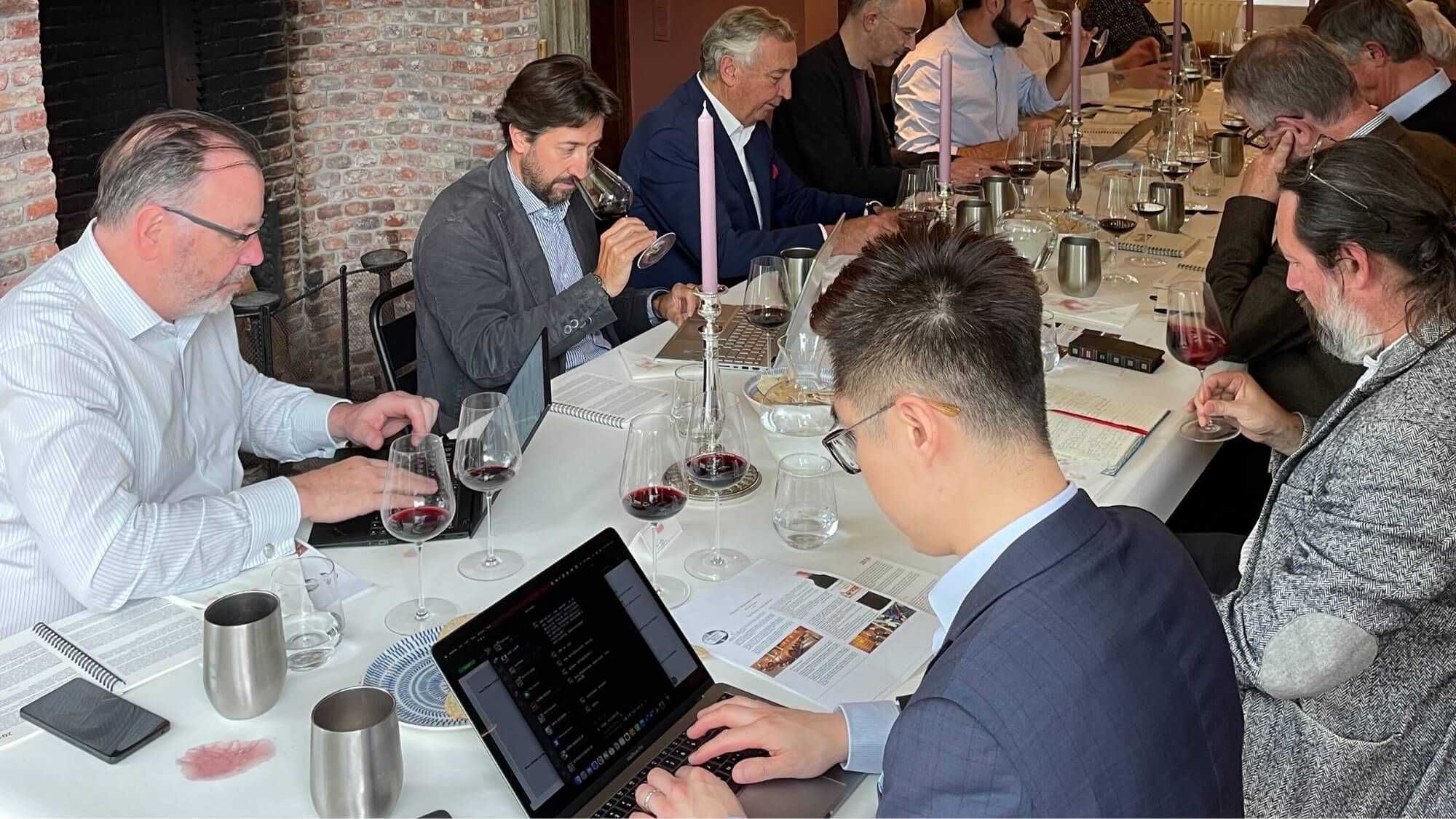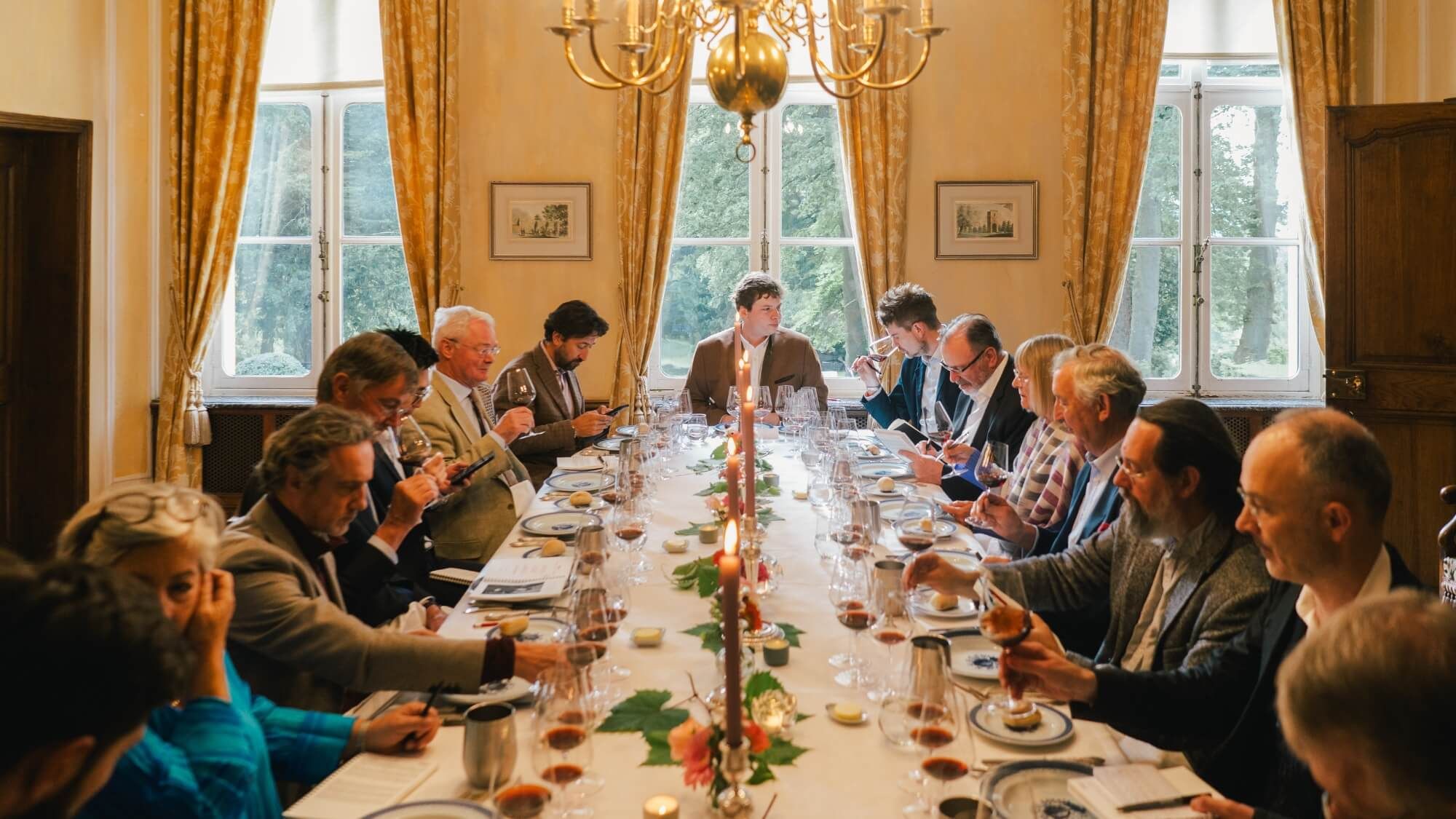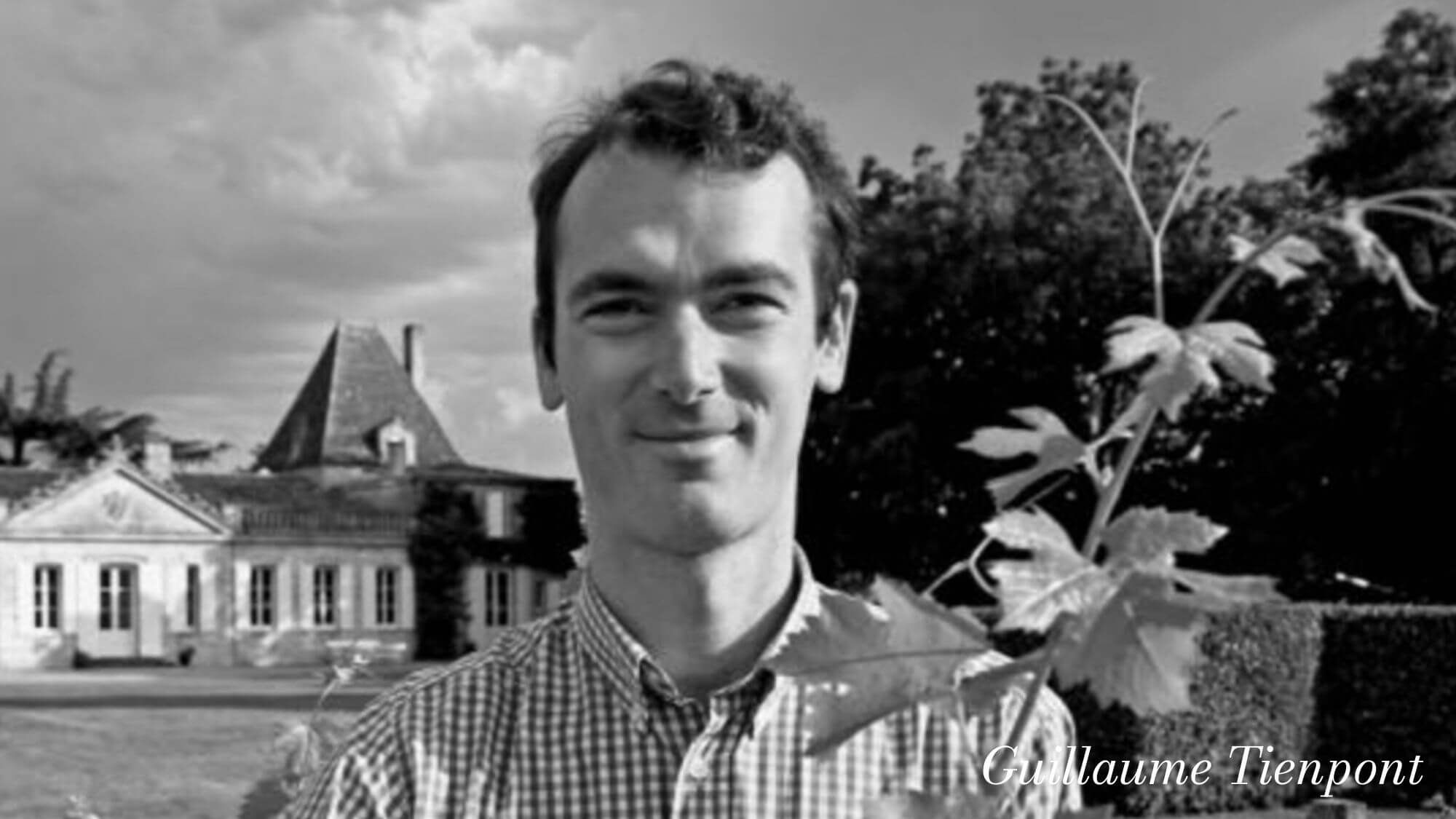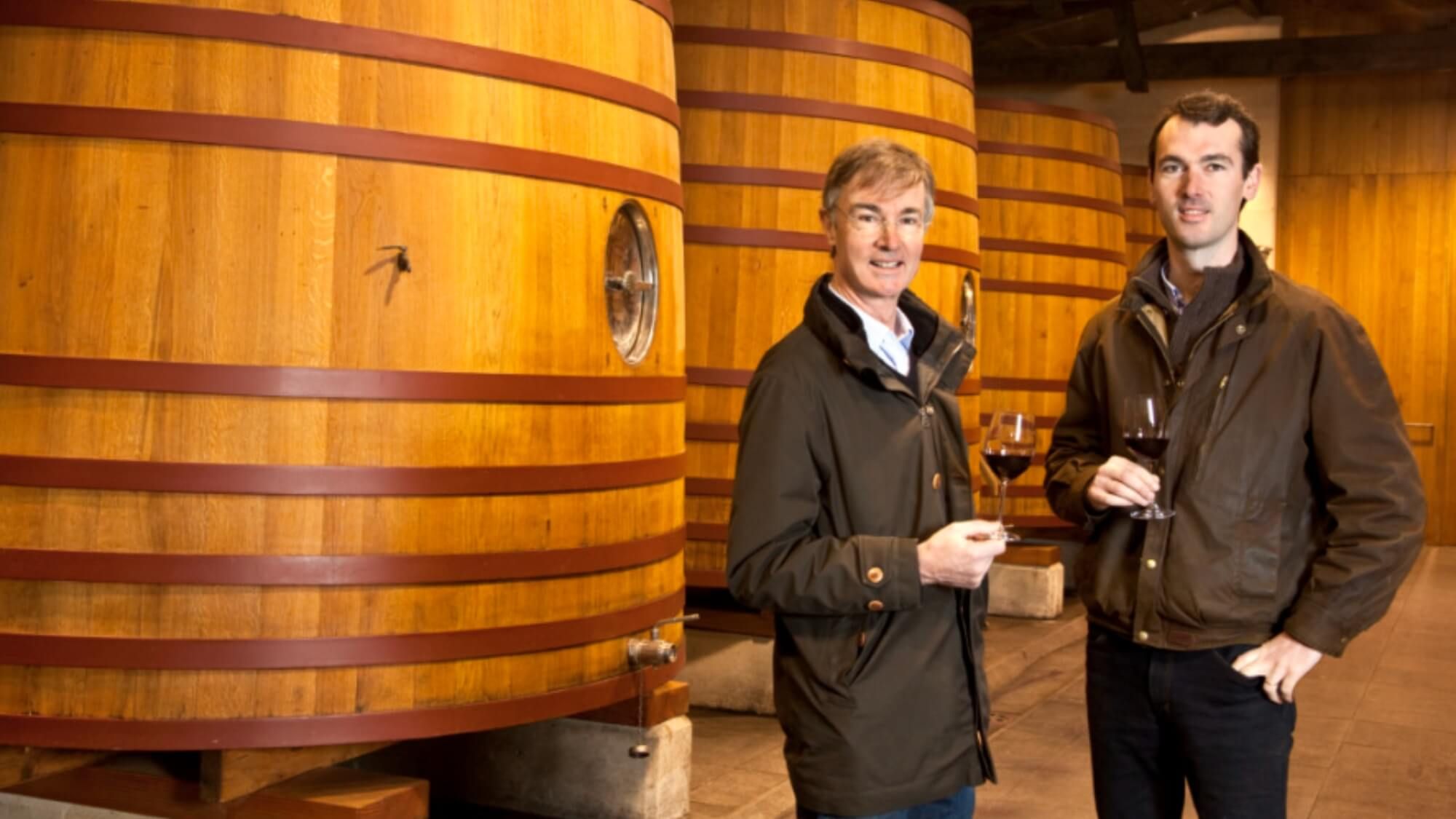AMA Vertical Tasting
Vieux Château Certan

01. The Beginning of the Story
02. A Century of Legendary Tastings
03. Personal Reflections on Vieux Château Certan
04. On Terroir
05. On Winemaking
06. The Family Story of Vieux Château Certan
07. Conclusion

Introduction
Before diving into this article,
I want to take a moment to express my heartfelt gratitude
to the friends of the Thienpont family f
or granting me the privilege of participating in
the first “Century-Long Vertical Tasting” of my life.
As someone who has been in the wine critic field for only seven years
—practically a “newbie with an old soul”
—this experience will undoubtedly remain etched in my memory forever.
It offered me more than just an upgraded understanding of aged vintages;
it provided profound life insights that transcend wine itself.
Honestly, how many such opportunities does one get in a lifetime?
To sit face-to-face with so many legendary vintages
and listen to their stories is truly a blessing.
This rare vertical tasting contains an abundance of valuable insights worth sharing.
As the saying goes, joy is multiplied when shared.
In this article, I’ll recount my tasting experience and
share the stories I uncovered about Château Vieux Certan (“VCC”),
hoping you can feel the same joy I did
when you next encounter this exceptional wine.

01. The Beginning of the Story
In May of this year, I received an invitation from Jacques Thienpont and his wife, Fiona Morrison, M.W.—both shareholders of VCC and owners of Château Le Pin. A once-in-a-lifetime, unprecedented “Century-Long Vertical Tasting” event was hosted at the Thienpont family’s historic estate in Belgium. This unique gathering was organized to celebrate the 100th anniversary of the family’s stewardship of VCC (1924–2024).
On June 6th, I left home before dawn, determined not to miss the 5:00 a.m. train departing Bordeaux. To my surprise, it turned out to be the longest train ride I’ve ever taken in France. After over four hours of travel (most of which I spent catching up on sleep), the train finally arrived in Lille at 10:40 a.m.
But the journey didn’t end there. Jacques picked me up along with his cousin, Alexandre Thienpont, and we embarked on a one-hour drive. We crossed the French-Belgian border and traversed the transition between French-speaking and Flemish-speaking regions before finally reaching the small town of Etikhove and the Thienpont family’s historic estate, Hof te Cattebeke.

This estate, built in 1612, has a history spanning more than 400 years. From the outside, it resembles a garden castle complete with wrought-iron gates, but the interior feels more like a traditional Chinese courtyard house. I was one of the first to arrive, and while waiting for the other wine critics to join us, I spent some time working in Fiona’s private study. Surrounded by centuries-old furniture, antique bookshelves, and even bookmarks, everything in the room seemed steeped in history. My modern MacBook felt almost out of place in such an environment—and, perhaps under the influence of the estate’s unique atmosphere, it even mysteriously stopped working later that day. 😂
Fiona and Jacques shared an intriguing detail about the wines we were about to taste: the majority of the bottles had been stored in the underground cellar of Hof te Cattebeke. Some of the vintages had been sourced through family and friends, but most of the pre-1960s wines had been transported by rail in barrels to Etikhove and bottled on-site. Since then, these wines have never left the estate’s cellar. This means that no other place in the world could replicate this tasting or offer such a pristine collection of perfectly preserved, aged VCC wines.

02. A Century-Long Vertical Tasting
This extraordinary vertical tasting spanned over 20 hours, stretching from the afternoon of the first day to noon the next. Aside from eating, sleeping, and cracking jokes, nearly every waking moment was devoted to the wines. That night, I even dreamed about tasting wine!

1. Great Vintages of the 21st Century (Millésimes du 21e Siècle)
The first session began in the afternoon with a theme titled
“Great Vintages of the 21st Century (Millésimes du 21e Siècle).”
We tasted 18 vintages, including some recent ones I was already familiar with.
(The 2015 vintage was a last-minute addition and wasn’t listed on the official tasting list.)
Starting with the 2016 vintage, Château Vieux Certan (VCC) has shown extraordinary consistency. These wines are elegant, fragrant, and full of poise. Even a frost-affected vintage like 2017—a year when VCC’s old vines, with their later budding, luckily escaped the frost’s impact—managed to demonstrate the quality of a grand vintage.

Two vintages stood out as truly unbeatable: 2016 and 2010. The 2010 vintage, in particular, was the pinnacle of perfection, an “all-rounded warrior”.
In my mind, it represents the apex of VCC’s artistry. Beyond the expected titans—2020, 2019, 2018, 2009, 2005, and 2000—other vintages also left a deep impression on me, including 2001, 2006, 2008, 2011, and 2012. I was particularly struck by the 2008 vintage. Despite being from a cooler year, this wine defied its climatic origins.
By the time we finished this first session, it was already past six o’clock. I initially planned to relax in my room but accidentally fell asleep on the bed. Let me tell you, being a wine critic is genuinely a physically demanding job! 😜

2. A Tribute to Great Eras and Great People (Grands et Personnels)
The second tasting session unfolded during the evening dinner with the theme
“A Tribute to Great Eras and Great People (Grands et Personnels).”
This round was absolutely exhilarating.
Even now, thinking back on it, my heart races with excitement.
We tasted another 18 vintages that evening. Aside from my birth year of 1988, every wine we sampled was older than me. If you ask me now what we ate for dinner, my mind draws a complete blank. But I can still vividly recall the incredible aging potential of the 1953 vintage and the sheer brilliance of 1961.
The 1961 transported me entirely. Tasting it felt like someone was playing an 18th-century antique cello beside me, serenading me with Bach’s Cello Suite No. 1.



3. The Great Vintages of the 20th Century (Millésimes du 20e Siècle)
Early the next morning,
the highlight of the century-long vertical tasting finally arrived.
“What? Yesterday’s tastings weren’t spectacular enough?”
I can imagine some of you thinking that.
To be honest,
I felt the same way—my mind was still spinning.
But when I saw the theme for this final session,
“The Great Vintages of the 20th Century (Millésimes du 20e Siècle),”
everything fell into place.
This, I realized, was going to be the pinnacle of my wine criticism career.
The lineup was simply breathtaking, featuring vintages revered by Bordeaux enthusiasts worldwide:
1934, 1942, 1943, 1945, 1947, 1948, 1982, 1983, and 1989.
Each of these wines is the kind of bottle that would draw envious glances in a Michelin-starred restaurant. And here they were, not just as individual stars but as an ensemble cast. 😍 Adding to this historic lineup were four vintages from the 1920s, including a bottle from 1923, predating the Thienpont family’s acquisition of VCC.

03. Personal Reflections on Vieux Château Certan (VCC)
In my previous descriptions, I may have overused exclamation marks ( ! ) out of sheer excitement. Let me take a deep breath and shift gears to share some detailed insights about Vieux Château Certan (VCC).
When writing about vertical tastings, I usually start with a discussion of the estate’s terroir. However, this time I’d like to approach things differently by first sharing my personal impressions of VCC.

📌 1. About “Black Truffle Notes”
First, we know that many top estates on the Pomerol plateau develop distinct black truffle aromas as they age. However, no matter how old VCC gets, it never exhibits black truffle characteristics. This might be due to its Cabernet Sauvignon component or the influence of old-vine Cabernet Franc. To me, aged VCC often resembles a Left Bank wine. With a few swirls, it frequently reveals classic Médoc notes of cedar and cold hearth.
📌2. A Barometer of Vintage Variation
Second, VCC serves as a barometer for the weather of each vintage. Its winemaking philosophy—grounded in restraint and adaptability—engraves the essence of the year into the wine itself. The wine does not attempt to mask the vintage’s character but embraces and reflects it, offering a transparent view of both nature and the winemaker’s interpretation.

📌3. A Singular Saline Finish
Third, one of the hallmarks of VCC is its ability to deliver an ineffable saline finish. This quality persists even in warmer vintages like 2009, 2016, and 2018. In my experience, this “saline touch” sets VCC apart from most Pomerol estates, which tend to emphasize “sweetness”. This saltiness conveys a sense of restraint and a distinctive air of sophistication that is uniquely “VCC.”
📌4. Elegance Amplified by Warm Vintages
Fourth, VCC is one of the most elegant estates in Pomerol, but its full potential often emerges in warm vintages. While cooler years like 1983, 2001, 2008, and 2011 have certainly captured my heart, they possess a gentler quality and lack some of the density and depth derived from the clay-gravel soils that shine in hot years. These wines are graceful but less robust compared to VCC from dry, hot vintages.

📌5. “Warm embrace” vs. “Cool elegance”: Merlot vs. Cabernets
Finally, one often-overlooked detail when tasting VCC is its duality of styles, which I describe as “Merlot-driven” vintages versus “Cabernets-driven” vintages. These two styles can be thought of as Vieux Château Certan’s expressions of “warm embrace” and “cool elegance.”
When the Merlot proportion exceeds 80%, the wine leans heavily into its “warm embrace” characteristics, exuding richness, softness, generosity, and a welcoming embrace. Classic examples include the 2020, 2009, 2001, and 1998 vintages. On the other hand, when the proportion of Cabernets approaches 30%—especially with a higher percentage of Cabernet Franc—the wine takes on a “cool elegance.” These vintages convey poise, restraint, and a sense of unwavering determination.
Many vintages from the 1980s and 1990s embody the “warmth embrace” of Merlot, often crafted with a blend of 60% Merlot, 30% Cabernet Franc, and 10% Cabernet Sauvignon, showcasing an approachable and balanced charm.
This duality offers a fascinating lens through which to appreciate VCC, highlighting its ability to balance the masculine and feminine elements of wine, year after year.

04. On Terroir
Of course, the defining characteristics of Vieux Château Certan (VCC) would be meaningless without its exceptional terroir and venerable old vines.
These are the foundations upon which its greatness is built. Take a walk through VCC’s 14 hectares of vineyards, and you’ll find thriving, ancient vines in every corner. The average vine age exceeds 50 years, with some of the oldest Merlot plantings dating back to 1932.
During a prior visit to the estate, Alexandre Thienpont explained to me why these old vines have been preserved instead of being replaced. According to him, the vines remain in excellent health, showing no significant drop in yields. To Alexandre, these old vines are the soul of VCC.

Speaking of vines, let’s talk about the soil.
Vieux Château Certan’s vineyards can be roughly divided into two parts.
One section is located at the summit of the Pomerol plateau, near Pétrus, at an elevation of 37.5 meters. This area is dominated by blue clay, which gives the wines an inherent “titanium-alloy” structure.
The other section surrounds the Vieux Château Certan estate itself, which also happens to have the largest concentration of old vines.
(During a conversation with Alexandre, I learned that the 14 hectares of vineyards are further divided into 23 parcels, each with its own distinct characteristics. Alexandre develops completely different cultivation strategies for each parcel based on the soil composition, vine age, and grape variety. Explaining the intricate details of all 23 parcels could easily fill an entire book, but for the sake of clarity, I’ll describe Vieux Château Certan’s practices in terms of the most commonly used methods, which are easier to remember.)

Gravel-clay Soils : Cabernet Franc
Put simply, Cabernet Franc is planted in gravel-clay soils. This placement ensures proper ripening and helps the vines avoid halting growth during hot, dry years due to water stress. For drought-sensitive Cabernet Franc, these soils are nothing short of miraculous—like “the milk of the Virgin Mary.”
Higher Gravel Content in Soils : Cabernet Sauvignon
Plots with higher gravel content are reserved for Cabernet Sauvignon. The reason is straightforward: gravel maximizes heat retention and drainage, which helps the late-ripening Cabernet Sauvignon achieve full maturity.
Blue Clay Soils : Merlot
As for blue clay soils, as mentioned earlier, these are the heartland for Merlot. Merlot grown in this soil develops an extraordinary “titanium-alloy” backbone, delivering a level of tightness and structure not often associated with the variety. Wines from these plots exhibit elegance while retaining impressive firmness, and 70% of Vieux Château Certan’s vines are rooted in blue clay.

05. On Winemaking
When it comes to Vieux Château Certan’s winemaking philosophy, I sense a “let nature take its course” approach, underpinned by calm confidence. Conversations with Alexandre Thienpont and his son, Guillaume, revealed that they spend 80% of their time discussing viticulture, with minimal emphasis on winemaking techniques. Today, let’s dive into Vieux Château Certan’s refreshingly straightforward winemaking process.
Unlike many Pomerol estates that have embraced expensive cement fermentation tanks, Vieux Château Certan employs a combination of large oak fermentation vats and stainless steel tanks, similar to Left Bank practices. Depending on the size of the vineyard parcels, the oak vats come in volumes of 4,000 liters, 5,000 liters, 6,000 liters, 7,700 liters, and 12,500 liters. These are primarily used for fermenting grapes from old vines.
Alexandre explained that the richness and complexity of old-vine fruit are best expressed when fermented in oak. In certain vintages where they want to emphasize fruit aromas, the wine may start fermentation in large oak vats and then spend part of its aging period in stainless steel tanks.

Furthermore, malolactic fermentation for the Merlot is conducted entirely in small oak barrels, which imparts greater roundness to the wine. Meanwhile, the Cabernet Franc undergoes malolactic fermentation in stainless steel tanks to preserve its elegant and delicate violet aromas.
Since 2008, the proportion of new oak used for aging Vieux Château Certan has been reduced to 50%, although the total aging time remains around 20 months. Based on my tastings, while the structure of Vieux Château Certan has not changed since this adjustment, the fruit aromas in post-2008 vintages have become notably purer and more precise.

06. The Century-Long Legacy of Vieux Château Certan
This century-long vertical tasting was also a celebration of the Thienpont family’s 100 years of stewardship over Vieux Château Certan. I must dedicate some space to sharing the fascinating story of how the Thienpont family established their legacy in Pomerol.
1924: A Belgian Wine Merchant’s Journey to Pomerol
In 1924, a prominent Belgian wine merchant, Georges Thienpont, and his wife, Joséphine, arrived in Pomerol. Three years earlier, they had acquired Château Troplong Mondot in Saint-Émilion, and now they were looking for a new estate with long-term investment potential. Two properties caught their attention: Vieux Château Certan and Château Taillefer.
At the same time, another influential family in Pomerol, the Moueix family, had their sights set on the same two estates. Out of courtesy, Georges and Joséphine allowed Jean-Pierre Moueix’s uncle to choose first. He opted for Château Taillefer, as its proximity to the train station made transportation more convenient.
Thus, Vieux Château Certan became the Thienpont family’s only option.

1934: A Challenging Beginning and the Legend of Vieux Château Certan
Thanks to the Thienponts’ strong social connections in Belgium, the early production of Vieux Château Certan was entirely shipped by rail to Belgium for bottling and distribution to other markets.
However, the prosperity was short-lived. The Great Depression of 1929–1933 hit the United States hard and soon spread across Europe. To make matters worse, Vieux Château Certan suffered three consecutive years of poor weather in 1931, 1932, and 1933, during which not a single bottle of wine was produced. Facing severe financial hardship, Georges was forced to sell Château Troplong Mondot to keep Vieux Château Certan afloat.
Perhaps it was divine intervention, but fortune smiled on the Thienponts in the fourth year. In 1934, they experienced the finest vintage since acquiring the estate—a year that became a legend in the history of Vieux Château Certan.

1940’s : Léon Thienpont and His Resilience During the War Years
After Georges and Joséphine, their son Léon Thienpont took over the reins of the estate.
This period encompassed one of the most tumultuous eras in European history, with the unprecedented devastation of World War II. Yet, Léon managed to produce several extraordinary vintages during the 1940s and 1950s.
Vintages like 1945, 1947, and 1954 remain, in my view, legendary. However, Léon was constantly constrained by financial difficulties, leaving him unable to modernize the estate’s facilities or invest in its infrastructure. If not for these challenges, I believe Léon could have delivered even more masterpieces for us to cherish.

1998: The Modernizing Reformer: Alexandre Thienpont
The Vieux Château Certan we know today is largely the result of the transformative vision of Alexandre Thienpont.
When Alexandre took over the estate in 1988, he immediately upgraded the winemaking equipment. By 2003, he had turned Vieux Château Certan into one of the most modern and forward-thinking wineries in Pomerol.
Over the past three decades, Alexandre has made numerous revolutionary changes. To ensure optimal ripeness, he introduced green harvesting and meticulous vineyard management techniques to limit yields. To further elevate Vieux Château Certan’s quality, he made the bold decision to downgrade some grapes that could have been included in the Grand Vin to produce a Second Vin, La Gravette de Certan.

Father and Son Together: A Legacy Spanning Four Generations
Today, Vieux Château Certan is jointly managed by Alexandre and his son, Guillaume Thienpont. Together, they continue to uphold their philosophy of “growing wine” rather than “making wine,” a belief that will guide their stewardship into 2024 and beyond. Anyone who has had the privilege of speaking with them cannot help but be moved by their profound love for Vieux Château Certan.
On this centenary of the Thienpont family’s acquisition of Vieux Château Certan, having such a talented and dedicated father-son duo at the helm is not only a testament to the family’s legacy but also a blessing for Bordeaux as a whole. They embody the wisdom and passion of four generations of Thienponts, a lineage that has poured their hearts into winemaking.
The next time you savor Vieux Château Certan, take a moment to reflect on this extraordinary heritage. It is a gift from four generations of winemakers to those of us who love wine—a gift rich in spirit, history, and soul.

07. Final Thoughts
A century-long vertical tasting of this magnitude is nearly impossible to encapsulate in just a few words. I dedicated ample time to every wine, savoring, reflecting, and engaging in a dialogue with each one. Every bottle has a story to tell, and I documented these experiences in meticulous detail in my tasting notes. I even wove in many of the historical events from the respective vintages to give the reviews additional dimension.
Here are the standout vintages I particularly recommend:
1934, 1945, 1947, 1953, 1961, 1983, 1990, 1998,
2000, 2001, 2005, 2006, 2008, 2009, 2010,
2011, 2012, 2016, 2017, 2018, 2019, and 2020.
I’ve also included reviews of several wines that scored below 90 points on my website. My goal is to give everyone a more comprehensive understanding of Vieux Château Certan’s evolution over the past century.I invite you to visit my site to explore these notes in greater depth—I promise it will be worth your time. 😉
